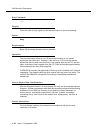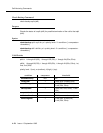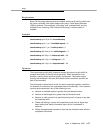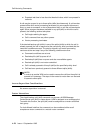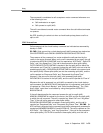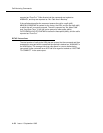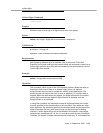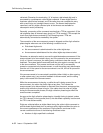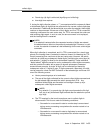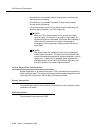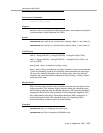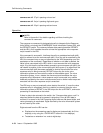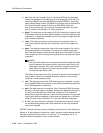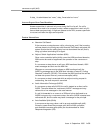
Call Vectoring Commands
A-32 Issue 4 September 1995
collected. Otherwise, the terminating ‘‘#’’ is kept as a dial-ahead digit and is
processed by a subsequent
collect digits
command. If fewer digits than the
maximum specified are entered, and if the caller does not complete the entry
with a pound sign, an interdigit timeout occurs. The timeout terminates the
command, and any digits collected prior to the timeout are available for
subsequent vector processing.
Generally, processing of the command requires that a TTR be connected. (If the
call originates from an internal rotary phone, no TTR is needed.) TTRs accept the
touch-tone digits that are entered by Call Prompting users. TTRs are
automatically connected as needed by the system.
The connection of the announcement prompt is skipped and the digit collection
phase begins whenever one of the following conditions is true:
■ Dial-ahead digits exist.
■ No announcement is administered for the
collect digits
step.
■ Announcement administered for the
collect digits
step does not exist.
Otherwise, an attempt is made to connect the administered announcement. If the
announcement to be connected is busy, and if the queue for the announcement
is full, or if there is no queue, the calling party continues to hear the current
feedback. The system waits five seconds and then tries again to connect the call
to the announcement. This process continues until the call is successfully
queued or connected to the announcement, or until the calling party disconnects
from the call. If the queue for the announcement is not full, the call is queued for
the announcement.
If the announcement to be connected is available (either initially or after queuing,
or after system retry), any previous feedback is disconnected, and the calling
party is connected to the announcement.
While the announcement is playing, or while the call is being queued for an
announcement, the caller may enter digits at any time. This causes the
announcement to be disconnected or removed from the queue, as appropriate,
and the digit collection phase to begin. If the caller does not enter any digits
during the announcement phases, the digit collection phase begins when the
announcement completes.
As soon as the digit collection phase begins, interdigit timing is started, unless
the TTR is already in timing mode (that is, the dial-ahead capability is active and
the TTR is not disconnected).
Digits are
collected
either as digits dialed during the
collect digits
command or
as dial-ahead digits dialed since a previous
collect digits
command but prior to
the current appearance of the command. Digit collection continues for the
current command until one of the following conditions exists:
■ Number of digits specified is collected.



